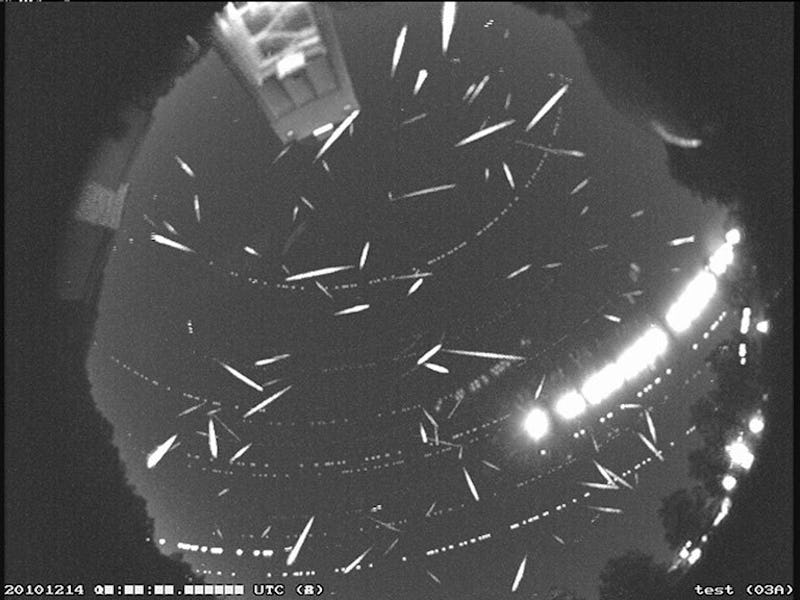How to watch the Geminid meteor shower
The meteors are competing with an almost full moon for visibility this year.

In 1833, passengers onboard a riverboat on the United States’ Mississippi River were treated to a light show like no other. Tens of thousands of pieces of falling cosmic debris lit up the sky, later becoming one of the most well-known meteor showers to occur over Earth.
The annual Geminid meteor shower has been going strong ever since — and it is getting more spectacular every year. The shower increases in the number of fireballs every year, and this week, the breathtaking display is once again on view.
Here’s when and how to watch this incredible event in the cosmos.
What is the Geminid meteor shower?
Meteor showers are streams of particles and debris that break off from asteroids. On its orbit around the Sun, the Earth passes through some of that debris and some of it collides with the planet’s atmosphere. As the debris flies through our atmosphere, the particles start to disintegrate and create the fiery streak we see in the sky.
The Geminid meteor shower originates from asteroid [3200 Phaethon]((https://solarsystem.nasa.gov/asteroids-comets-and-meteors/meteors-and-meteorites/geminids/in-depth/), which orbits the Sun once very 1.4 years and measures around 3.17 miles in diameter. Due to the asteroid’s close proximity to our star, it was named after the Greek mythology character, Phaethon, who was the son of the Sun god Helios.
Jupiter’s gravitational force tugs on the shower, bringing it closer to Earth over the years. But soon, it may travel outside of Earth’s orbit altogether.
When to spot the Geminid meteor shower
The ideal time to view the shower in North America is the night of December 13 through December 14, although it may still be visible for a few days after that. The brightest point is predicted for 2 a.m. Eastern. The shower usually peaks at around 120 visible meteors per hour under perfect viewing conditions. This year, however, regular viewers may be disappointed, as only 20-30 meteors will be visible due to an exceptionally bright night sky.
The Geminid meteor shower in action.
In the United Kingdom, the best time to view is the night of December 14 and the early hours of December 15, according to the Royal Observatory.
The meteor shower happens to coincide with a gibbous moon, or a nearly full moon, which will outshine some of the smaller meteors and obscure them from human eyes. But if you set an alarm for a 2 a.m. Eastern wake-up call, then you will be sure to still catch the bigger, brighter fireballs.
Where to watch the Geminid meteor shower
The shower is thought to come from the constellation Gemini — the point in the sky known as a meteor shower’s radiant. So in North America, it is best to view the Geminid meteor shower while facing south.
You also don’t need any kind of special equipment. This meteor shower is ideal for inexperienced and unequipped star gazers. You just need to step away from street lights and any other major sources of light pollution to see it best.
And make sure to avoid any bright screens before you look up, so ditch your cellphone for at least 30 minutes before you do to allow your eyes to get accustomed to the darkness. You will be well-rewarded for giving your Instagram feed a break: Instead of cat pics, you’ll see a fury of bright specks of light litter across the night sky.
Handily, NASA has a predictor that can tell you what viewing conditions will be like in your area. You can test it out here.